March 12, 2015 saw the release of Sid Meier’s Starships on PC, Mac, and iOS by Firaxis and 2K Games. The game is a continuation of the story from Civilization: Beyond Earth but a different genre of game altogether. Starships is a strategy-light experience with very minor 4X elements that focuses on the player’s fleet that goes about the galaxy doing missions and fighting its enemies as it gains influence over planets. The game’s main focus is tactical space combat.
The problem with Starships is that calling it strategy-light is an understatement as even the game’s tactical battles are very simple and straight-forward. Though lighter strategy games can be fun, Starships sets the bar too low for itself making it more of a casual experience, one would play on an iPad while busy doing something else instead of it being the player’s main focus of attention.
Despite its simultaneous release on iOS and PC, the game feels like an iOS port to PC. Though some iOS focused games can offer deep and entertaining experiences that can rival some PC titles, there are those that are meant for a more casual experience or as a minor distraction. Starships falls more into the second category than that of the more serious offerings of iOS games.
Presentation
The game overall looks good for a budget title. The art images are stylised and some of the ship models are very nice. Music is only average though. There’s thematic voice overs for many actions but these tend to be short, with many of them being re-used assets from Beyond Earth. However, the ship models are not that distinct as you equip different modules, most of the visual distinctiveness will come from your primary affinity and from your ship’s class as you equip more modules.
Another downside with the visuals is that the standard weapons look roughly the same. Only the impact head and the trail show some minor differences. You can tell a laser and plasma strike apart, but they do not feel or look different at all. Also, the ship explosions are laughably bad; little bits fly off as small explosions that barely register visually pepper the model and then the model just disappears. The initial explosion from the weapon’s impact is okay, but the continued explosion of the ship is the issue.
Good graphics or animations are not always a must but some effort to give them a certain appealing style or consistency with the rest of the visuals is still important. The problem with the explosions is they stand out, sticking out like a sore thumb in the otherwise somewhat visually decent models.
Game Set-up and Settings
The player can choose to play any of the 8 factions from Beyond Earth. They also choose which affinity they are at the start, one of the 4 difficulty settings, and one of the 4 map sizes. You can also choose the number of opponents (6 max, meaning they’re only 7 possible factions on the map) and which Victory condition you can win as. This last option only affects the player as the AI can achieve victory by any condition, which is not how victory condition selections usually work. The player is limited to selecting only one or have all enabled. There is no cherry picking.
It should be noted that on the epic size map the player doesn’t automatically conquer a whole faction by taking its Homeworld. They need to take each planet individually. But, on big or smaller maps, taking a Homeworld from a rival will take over their entire empire. This is not explained anywhere.
The player’s affinity and faction choices will give different bonuses. However, the balance is a little odd for some. Example, Supremacy gives a free wonder. This can be seriously overpowered or underwhelming as not all wonders are equally appealing. Warp Control will feel wasted in the start of the game and is debatable if it’s useful later, while Tight Squeeze (lets fighters fly through asteroids) can be very powerful as the player can immediately focus on a devastating fighter build.
The same can be true for faction bonuses, one faction gets a metal bonus and the other gets a credit boost per city. These can be underwhelming in the early game, but as the player nears the end-game they become insanely powerful and can easily tip the balance to victory very quickly. While having two free techs or a ship is nice at the start, it does not compare with the factions that get the metal and credit boost, especially if your free techs are in a direction you did not intend to go.
The game also lacks many options in the system’s menu, further giving it a feel that it is more of a mobile port. There is no full-screen mode, and the borderless window doesn’t overlap onto the system bar, which normal borderless window modes tend to do. When played on the PC it literally feels like you are meant to be doing something else while playing it.
Strategic Layer
The strategic layer is simple, which on its own is not a bad thing since the game’s focus is the tactical battles. The player accumulates Energy, Metal, Science, Food, and Credits. The last one, Credits, is only earned through missions, selling surplus of the other resources, or the special trait of one of the factions. The player can then spend food to increase the number of cities on a planet, which will increase the planet’s overall output. The player can use metal to buy planetary improvements that increase one of the yields or build wonders; they can also build defensive drones or a warp gate (immediate travel between worlds). Science is spent to buy tech upgrades, and energy is used to buy new ships and customise them.
The game does have wonders; however, each planet can only build one wonder specifically and it is predetermined which one it is. So the player can’t rush to the wonder they want, they need to get a planet that has it as its option. This prevents someone from bee-lining their favourite strategy, but this can also be frustrating as many wonders are almost useless leaving the chance the player will not be able to get a worthwhile one before the AI builds it.
Credits are used to buy any of the additional resources (and can be gained by selling surpluses); however they can also be used to buy influence over a planet thus speeding up their entry into your Federation. The only other ways to earn influence over a planet is to be the first one to make contact with it, complete its mission (which can give between 1-3 influences). The player also gets 1 for ending their turn on a planet. Once the player has 4, the world joins your federation.
Diplomacy is simple, you can get info about the other faction and you can sign a peace treaty. When you encroach on an enemy’s sphere of influence they may offer you something to sign a peace treaty and let them be. You may also receive a “mission” from their enemies to encourage you to start a war. If you succeed you get access to the planet, and if it was a planet in their empire it flips over to your federation. On a big or smaller map, claiming a Homeworld gives you the whole empire.
The player is capable of performing multiple actions per turn with their fleet, but each movement without a warp gate, or mission completed, drains morale. The lower the morale the less effective your ships become. This effect is not significant but it can be important in close fights, eventually leading to ending your turn. The player can end their turn early to conserve morale during the AI’s turns. This does give an interesting management system for the game.
The game is won by researching 3 techs to level 6, gaining 51% of the population, building 7 wonders, or killing all other factions. It should be noted that the player can choose to limit themselves to one victory condition, but the AI will always be able to win with any of the victory conditions.
The whole system is simple, straight-forward, and quick to learn. Which is fine for a light strategy game that focuses more on the tactical battles, however the problem is the tactical battles themselves are not as engaging as they could be.
Ship Customisation
Ship customisation is the corner stone of a tactical space combat game; usually if this aspect is weak so will the battle mechanic also be weak. Starships sadly falls on the weak side in this department. Firstly, the tech system. All techs are merely linear growth of your ship’s modules. The player upgrades how much speed an engine modules gives, increases the damage of the weapon systems, increases how effective sensors or stealth is, and how powerful fighters are. That is it. No special properties, special weapons, nothing, just increasing the effectiveness of everything that is available from turn 1.
The player then spends energy to increase their fleet or improve their ships. The player can also sell older modules for a small refund. This lets the player customise their vessels on the fly. The system can be interesting, but due to the way the tech system works the player will usually go for an optimal build, and due to the way the tactical combat system works that build will be true for all ships. Having different ships do different things is not necessary and it will be more efficient to make all your ships heavy killers.
The other aspect that doesn’t help regarding ship customisation is that stealth and sensors have no downside, so as long as the player has the energy they can invest in those systems. Also, the AI uses stealth poorly, meaning sensors will not be a top priority. The other thing that compounds the problem is lasers are underwhelming (more on this in the next section) so the player will quickly go down a plasma and fighter route with torpedoes being a valid option.
An important note, the player has only 1 fleet and it is capped to 8 ships. The use of warp gates is what lets the player respond to the incursions into their territory by other factions.
Tactical Combat and Missions
The missions the player gets are varied at first. Escort a colony ship, destroy a transport before it gets to its destination, navigate an asteroid field, survive an ambush, destroy a planet killer, or a straight up fight with a variation on the map. Planets will reissue the missions the next turn if no fleet is on it. Engaging another faction will trigger a straight-forward fight with a map variation. The use of warp gates, the distance from it, and overall location determines how quickly the enemy fleet arrives to protect the planet.
The combat system is also straight-forward. You move all your ships on your turn, and the enemy does the same. This can sometimes take awhile to have the AI complete all its moves. Also, if you set yourself up perfectly, or get first strike and have the range to do so on the first turn, you can devastate the enemy. More than once, I was able to wipe out a strong enemy fleet on turn 1 before they even had a chance to attack because we started close enough, my vessels had good speed, and I had the right mix of wonders. Achieving this is not difficult either, which made this strategy viable and reused on other playthroughs.
A ship can only attack once per turn and only use either lasers or plasma cannons even if you have the dual command wonder, which only lets you have another none-attack action, which can be firing a torpedo or launching fighters. Lasers are long range weapons but are extremely underpowered when compared to cannons. Once you enter close range a single cannon module can outclass several upgraded laser modules. The laser wonder helps this by removing the range penalty on lasers; however, the map layout will make it that plasma cannons will still be the better weapon.
There is also a battle card mechanic where the player gets battle cards that they can use in combat that tilt things in their favour like giving extra moves, slowing down the enemy, and the like. This system is random and also unneeded. I usually forgot these existed and blasted my way through missions without even checking what card I had access to. I sometimes would check only to see if I had a +2 move card so that I could finish the mission this turn or when a fight goes badly, something I can use quickly, but these incidents were rare.
One interesting aspect of combat is torpedoes, the player fires them but they do not detonate till the player commands them to and the option only becomes available at the start of the next turn. The mechanic is that at the beginning of your own turn you get to detonate your torpedoes or make them run their course with the option to detonate along the way. If the player abstains, the torpedo will continue on its journey at the start of the following turn. Torpedo blasts can also clear small asteroids and destroy other torpedoes; they also have a huge blast radius and do a lot of damage to several vessels.
The game tries to give variations to combat by giving a topographical map of space. Aside from breaking any semblance of realism by the number of warp holes and asteroids all over the place, the maps make it that most of the time lasers and plasma weapons will be blocked by asteroids. This means the player needs to get in really close in order to get a straight line shot to an enemy ship, hence why plasma weapons will always outperform over lasers. When the player receives a wide open map that favors lasers it is not hard to move your ships close enough that plasma weapons will suffice and do way more damage. This is why the Tight Squeeze wonder is so powerful, because your fighters can fly through asteroids and thus completely ignore the map, and if upgraded heavily they can take down capital ships in one attack.
The other failing of the tactical combat is the AI and the repetitiveness of it, which is covered in the next segment.
AI and Replayability
The AI is capable enough on the strategic map, and at the higher difficulty levels it will aggressively pursue the many victory conditions which are always available to it. This can challenge the player. Also, since weaker AI factions tend to merge into stronger ones to overcome the player, the player may lose to a population or wonder victory easily if they are not careful. This sort of challenge is artificial unless the player also has all the victory conditions enabled too.
Tactically the AI is disappointing, and though there is a marked improvement from the lowest to the highest difficulty setting the AI seems to not know the game mechanics. At the higher settings the AI will still stealth stupidly thus automatically failing it or leaving the player an easy way to spot them without even needing to use sensors. Though the higher AI can dodge lone torpedoes it will be overwhelmed by a salvo that a player would know how to dodge easily.
Another failing of the AI in combat is its inability to gauge the player’s “pouncing” ability, which is to say staying away from the AI’s main threat but letting them get close enough that you can obliterate them on the next turn. This is probably due to the AI not factoring the human player’s speed and any wonder they have that can make “pouncing” more effective. This doesn’t mean the AI can’t be dangerous, it’s just that it’s easy for the player to circumvent it once they understand the system fully.
This creates the oddity that though the game can offer some challenge on the strategic layer, once you know how to beat the AI every time in tactical combat you can spin many strategic elements in your favour like taking wonders away from the AI or making sure no one gets over 50% till you get your victory condition.
Since the same tactics will work and the AI will become predictable, this makes the game lose some replayability. Also, it is not uncommon to see missions repeat on larger maps and even on smaller ones, and the player will start seeing a lot of repeats in a second playthrough. Sometimes, different missions will have exactly the same mechanic with only a minor difference in them.
After two playthroughs the player should have seen it all and probably experienced a lot of repeats. The game seems to work better in smaller doses than any prolonged playtime as even the largest map can be finished in a few hours with most games ending in less than an hour.
Cross Connectivity with Civilization: Beyond Earth
Playing Starships unlocks new start-up options and maps in Beyond Earth, while achieving things in Beyond Earth unlocks more options, missions, and planet types in Starships. This can be seen as a way to reward owners of both games but can also be seen like cording off content for those that only enjoy one of them. This is not too far fetch to believe as the games are drastically different. Despite Beyond Earth failings, it is still a serious 4X title and a full strategy game. Starships seems to be more of a game that would appeal more to a very casual mobile crowd who happens to be curious for a bit of strategy.
The demographic that would adore Starships more might not be interested in a full 4X title like Beyond Earth, while a 4X player might find Starships too light-weight to be worth their time. This could possibly be interesting for someone graduating into Starships and then be given an incentive to further step-up into a more complex strategy game.
The player can also import a game from Beyond Earth. This only preselects the number of opponents, your opponents, their affinity, your own affinity, and starting diplomatic stance. This feature is more gimmicky and doesn’t really add much to it except giving a sense of continuity with a Beyond Earth game.
A lot of the new options given from Starships are more interesting than the ones available for the vanilla version of Beyond Earth. Considering how uninteresting many of the old start-up options were in Beyond Earth, these should have been in a patch that fixes that game and not as a bonus from another game.
Final Verdict
I wanted to like Starships, and did not go in with high expectations. I was aware this was a light strategy title and that the tactical combat will not be any sort of heavy hitter either. I expected every aspect of the game to be simple. I also knew it was meant to be played more quickly. Despite setting my bar this low, Starships still manages to trip on the pole.
The lack of distinctiveness between lasers and plasma visually along with the laughably bad explosions stick out like a sore thumb. The AI’s inability to use Stealth or Torpedoes, and properly counter a Torpedo barrage is disappointing. Seeing a Plasma heavy build that is also fast with fighters roll over any threats just adds more to the list. The overly simple tech system just compounds it all.
It also feels like the only challenge in the game really comes from the fact that the AI can use any victory condition no matter what. This means the player plays a game of denial till they achieve their own victory condition. It sort of becomes more like a puzzle on how to prevent the AI from winning, and even at that it isn’t even a hard puzzle to figure out.
There are some elements of enjoyment in the game if you treat it as something you play while standing in the subway station or sitting down in a bus. A game you play to kill some time as you wait for your friend to finish-up in the bank or waiting in the car for someone. In this case, the game can be fun and is the ultimate casual mobile experience. However, if you’re looking for a game to play in your bed while on your iPad or a game to play on your PC, this isn’t it (unless you tab to it while waiting for the turn to process in another game).
|
Space Sector score:
5.0/10
Mediocre
|
|---|
| The Good: – Art and some of the graphics are nice for a budget title – Easy and quick to get into – Cross connectivity with Beyond Earth can offer some novelty |
| The Bad: – Weapon graphics are lackluster and explosions are embarrassingly bad – Too quick to play, can get repetitive quickly – Serious lack of depth and complexity – Not for serious strategy players – Cross connectivity can limit content in both games if you do not own both |

31 Comments
Related Articles:
- Sid Meier’s Starships: New Space Strategy Game Announced
- Sid Meier’s Starships: First Gameplay Footage
- Sid Meier’s Civilization: Beyond Earth Announced
- Gratuitous Space Battles Review
- Distant Worlds Legends Released

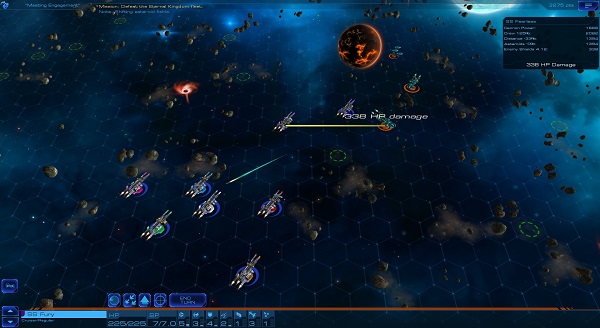
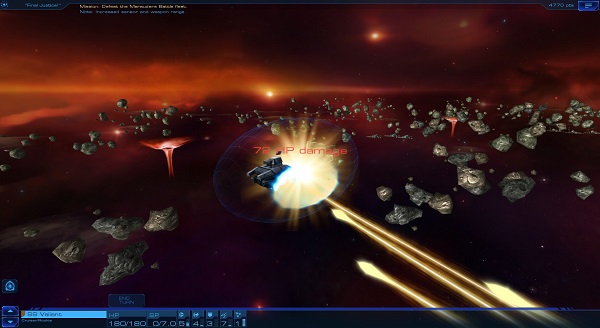
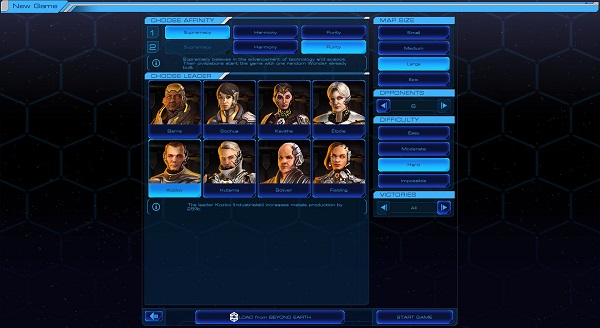
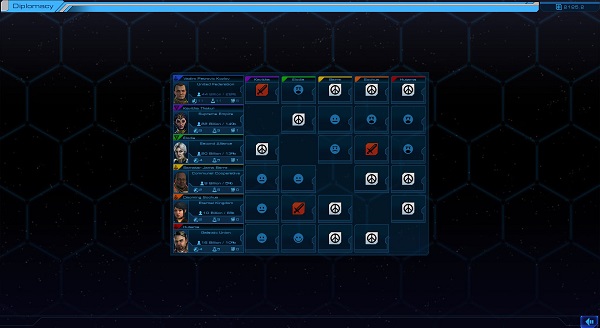
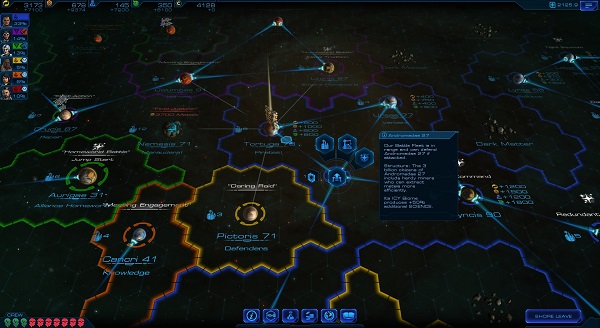
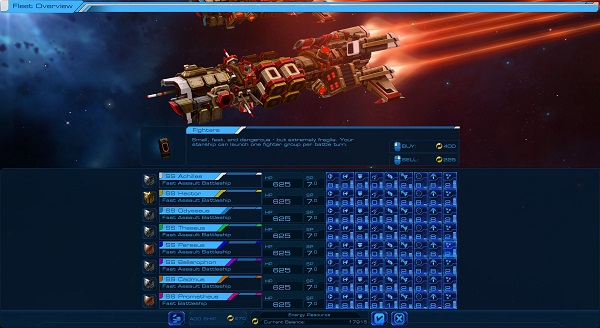
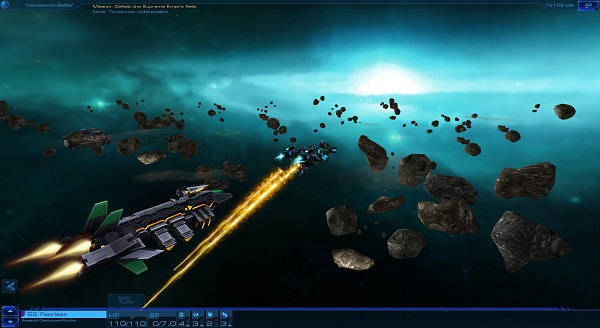
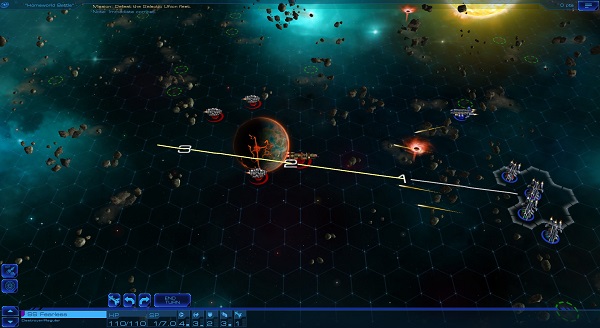
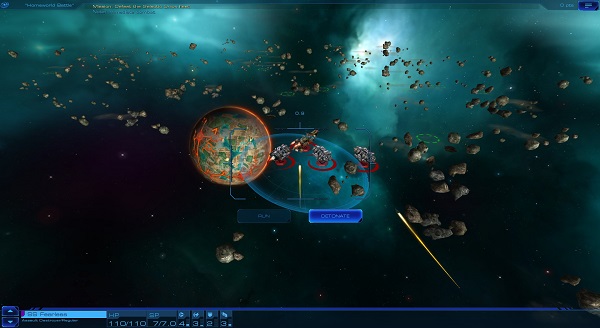
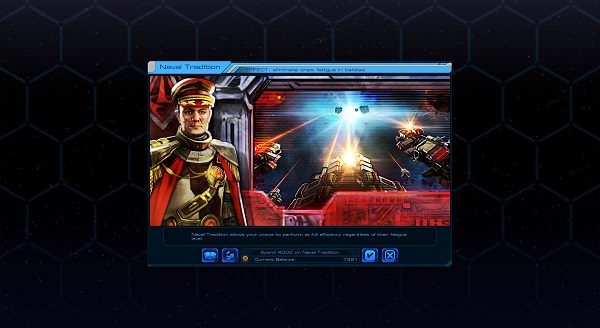
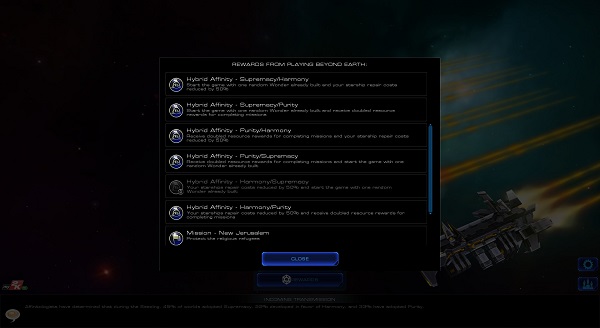











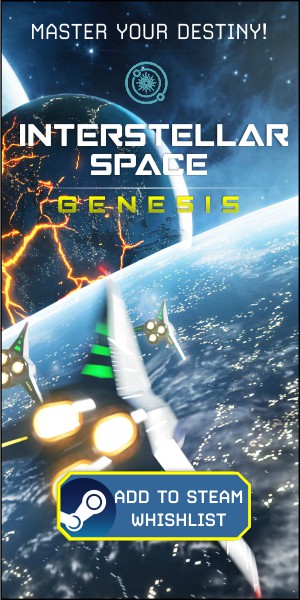





Another spot-on review. I don’t know what’s happening at Firaxis, but it’s like they’re giving up on making great TBS games. It’s a little heartbreaking, actually. Let’s be honest; BE was mediocre at best, Starships is less than mediocre (5/10 is a failing grade, imo), and upon initial release of Civ V, that was meh. It took the expansions to make Civ V worthwhile. Here’s hoping that expansions for BE will elevate that title. I’m not sure what kind of expansion could help Starships, though.
I’d say Firaxis has been failing for longer – Alpha Centauri was their last “good” game with some well implemented improvements on the Civ genre (society engineering, unit design). Civ III offered little improvement over Civ II, with some game-wrecking features like massive unhappiness modifiers for distant cities. Civ IV had a screwy implementation of AC’s society engineering in religion which made little logical sense.
Not touched Civ V or later since these are Steam-exclusive but moving to a DRM-system that so greatly infringes on consumer rights seems to go hand-in-hand with further drops in game quality.
Sticking “Sid Meier” on a title now seems to be a badge of mediocrity.
Actually Civics were the gameplay analog to Social Engineering.
They both were unlocked by researching the corresponding tech. Both required the player to select a ‘trait’ within a category. Both had several categories with several ‘traits’ in each. Both limited the player to only one selected ‘trait’ in each category. Both influenced the bonuses and penalties the player received.
They both were an upgrade to the Government System which could be seen as a one category ‘civic’. Basically, the player’s ‘government’ or ‘society’ was shaped by these choices. They influenced the bonuses and penalties you got, and influenced diplomacy.
As for the term, social engineering fits well with the sci-fi setting of SMAC. By the time Civ IV came out, Civilization has established itself with a different theme than what SMAC had. So the term didn’t mesh as well with the overall theme anymore, hence why it was probably called ‘Civics’ instead. But it is the same core gameplay mechanic. Just a different label with different elements to fit a historical setting instead of a sci-fi one.
Religion in Civ IV was unlocked by the first person who researched a given tech and was spread via missionaries, it was a type of influence mechanic along with Corporations. These also had special units respectively to allow the player to spread them. Also, both could benefit certain Civics choices. Not sure why you compared Civ IV’s Religion to Social Engineering…
However, it is true that no Civ game since SMAC had something similar to the unit designer.
Actually Civics were the gameplay analog to Social Engineering…Not sure why you compared Civ IV’s Religion to Social Engineering…[/quote]Because I confused the two – my bad.
However I found Civ IV’s Civics to be inferior to SMAC’s Social Engineering in that SMAC’s bonuses (and penalties) both made sense and were coherent. For example a Green economy in SMAC gave +2 efficiency but imposed -2 growth whereas in Civ IV the Environmentalism civic gave cities +5 health and +1 happiness for each Forest/Jungle space. Unless Civ IV’s windmills double as amphetamine distribution centres, I fail to see the reason for the happiness modifier. :)
I would have to agree with this assessment.
Civ IV: BTS was a good game, but only after the modding community was able to save it from the problems that had built up over the worst of Civ IV.
Civ V: BNW, even with mods had some serious issues left. The AI for example cannot wage war effectively – the stack of doom has been replaced by the carpet of doom. Mods can address some of the issues, but not all.
BE so far looks like it is going to be just a pale comparison of what SMAC was and just a Civ V mod really. I suspect that the expansions are going to follow the path of Civ V – or worse.
Starships seems just underwhelming judging by what I am seeing here – it looks more like a tablet game that was ported over.
1 fleet, max 8 ships.
Wasn’t it this one that was supposed to be devoloped by Sid or something like that?
Whatever, this is just embarrassing. Even for an ipad game, it doesn’t look like a good game. Why they bother to port it in PC, I have no idea. But who knows there could be a new demographic of PC gamers emerging for these kind of games. But they won’t come from the 4X sub genre that’s for sure.
1 fleet, max 8 ships. What.
Hey it could be worse – GalCiv 2 only allowed you 7 ships in a fleet. :)
I hated that “feature” :D.
Oh come on, at least you were able to have more than 1 fleet. That is a significant difference from how Starships is played. The small fleet cap in Gal Civ was bad, but you were not limited to one fleet.
Yes but still was an arbitrary and unnecessary feature that made no sense.
A ten dollar review of a fifty cent game. Between this and BE I’ve given up on Firaxis.
I’m just glad Amplitude is around to pick up their slack.
Already after seeing the announcement trailer I was skeptical after seeing the first gameplay footage that skeptics increased massively and I thought to myself I am pretty sure I am not going to buy this. So I am not surprised to hear that the overall game is rather lackluster. Other reviews I’ve seen came more or less to a similar conclusion. Shame after X-COM not much good has come out of Firaxis.
I wonder if Starships originally was planned to be a DLC for BE? From the review, it certainly seems much too light to be a stand-alone game, and the connectivity with BE suggests it was created in parallel with BE. I guess it doesn’t matter now.
Thanks for the informative review. I know now not to waste my gaming dollars on Starships.
Its a sad day when even Sid falls flat on his face. Is there anyone on the planet who even has a clue how to make a good strategy game any more?
First of all, i just registered on your website after following your articles for more than 3 years. Usually the over optimistic reviews are one of the reasons that games this day are not what it should be (this is indeed my personal opinion and of course the reviews are not the main cause for this). I’m not a hardcore gamer but i enjoy a deeper level of immersion in games. Today young people are not stupid as companies think they are. I personally think the game corporations are “keeping” them stupid (in terms of games). This way they are not obliged to put an effort in game creation and the only thing they are considering is the profit. Other thing that is very annoying (at least for me) is the lack of story immersion. Random generation on maps, x factions to choose from, high “replayability” … is a twisted and false sense of game survival. In the end after extended play i still find myself craving for an unknown something that is still missing. I am aware that those things are nothing new for many people but i still feel the need to write them lol. Keep up the excellent work, Space Sector.
Hey Virgil Welcome to forums
Lets hope that they don’t replace the something missing with loads of busy clicking with no depth of play
Hi Virgil, welcome to Space Sector! I’m glad you took the time to register in the site and contribute to the discussions.
Story, random generation and high replayability are difficult elements to combine, unfortunately. But perhaps more can be done in terms of theme, backstory and flavor to give more immersion (or engagement, if you prefer) to a game. That’s probably what you feel is lacking when you mention the “unknown something” that is missing.
And no, I don’t believe many developers are fully aware of this when they design their games. Maybe they are at some point (probably at the beginning of a project), but the sense that a game is much more than mechanics probably gets diluted due to enormous endeavor that is to develop a game. A game may be solid in terms of mechanics, but mechanics alone are not enough. They’re just one element of what makes a great game. You also need proper aesthetics and story elements, as well. So, I’m glad you brought that up.
Come back often to comment, we need good discussions to keep the site alive and well.
First of all, great review, and second of all, I totally agree with Virgil. Procedurally generated universes are increasingly popular in all genres but it seems they’ve totally taken over the strategy genre which is a huge shame imo because they make the game world feel somewhat lifeless and lacking in character. Just look at how well homeworld holds up, who would even remember it today if Homeworld 1 had been multi+skirmish only. That was my biggest problem with Sins of a Solar empire too. Granted, it’s a little harder to do story in grand strategy, but total war and europa universalis manage just fine by relying on history… all that’s needed to do the same in fantasy/sci fi is some imagination and good writers. Even the “pop-up story within a procedurally generated map” of distant worlds and endless legend helps quite a bit since there is a large-scale story going on rather than just random events.
Hello Adam. I have recently played Dragon Age Inquisition and this game is a good example of a well done job. I know that u cannot compare the financial power of the companies behind this francize with the rest of competition, but Mass Effect 3 could have been better and there are alot of examples of big budget games gone wrong. It’s possible to create a huge game without many random components and DAI is huge in terms of play time AND most important immersion. You are indeed the one, the hero that changes the world fighting against impossible odds (Mass Effect 1 alert! hehe) Of course the story is not unique and the flavor of DA 1 cannot be matched, but damn this one was GOOD. The big world, many side quests (i repeat, not random lol), rich lore, the drama, everything was so well done. After finishing the game with a warrior and archer i stopped playing since then. Why? Because i completed the game and the satisfied feeling of COMPLETION is more than enough for now. I might return for a replay but i don’t feel the NEED for now. The money was well spended and i don’t feel the NEED for a refund. A good game memory was created and this is what a game should do. Just move to another chapter, i dont want to grind the same stuff like 1000 times. I want to eveolve, not to endless play same stuff for years.
I have to mention that i started to play DAI after the game was seriously patched and the price dropped a little lol. And i’m more than circumspect when the big companies drop a “big” game on us.
But enough of being critical, let’s hope we have this year alot of good games to debate on!
The big problem here is that Firaxis is starting to miss the mark on satisfying its core demographic. I’m not sure if they’re trying to attract a wider audience – I’m sure they are. Who isn’t? But I think the key with getting PC gamers to talk about your game is to fire up that hardcore core demographic – the people who like deep mechanics and endless replayability. This is what made Civ so successful.
Starships is shallow, lazy, and cheap, and it didn’t need to be any of those things. Firaxis must have a fairly sizeable war chest at this point. Oh well.
I think the mistake is too many developers look at the shark and forget the pilot fish. They look at the big ‘casual’ shark and all that monetary mass it has and thinks it can bait it in, however the shark follows the pilot fish. In a way the hardcore core demographic act like pilot fish to the big casual shark, leading them to where the tasty titles are.
That was not my metaphor, but I believe it applies here. What I personally believe also happens is a misjudgement of the casual crowd. There is more than one to begin with, no matter how hard Firaxis tries it won’t pull in the Candy Crush crowd.
As for the more ‘serious’ casuals, I think they like and want the same thing the core demographic wants. They are just less forgiving about different things than the hardcore demographic and play on easier difficulty settings, but in the end they too like deep and enriching games that is mechanically satisfying. So when they blindly cater to those preferences, you end up with a game they might enjoy for a short time, but get bored of and go back to following the pilot fish again.
I know its hard to please the hardcore crowd, and you will always have a few that will never be happy about anything. However, trying to shortcut past them is just going to end up badly in the long run.
The more I think about it, the really successful games tended to please their hardcore audiences first:
– Starcraft
– League of Legends and all of the MOBAs
– EVE Online
– World of Warcraft – you could argue it’s current decline is in part not just due to demographics, but because they made decisions that angered their hardcore base
The Total War franchise is arguably one that is also in decline after the disastrous release of Rome II and Empire.
Supreme Commander is an example of a huge decline too after Supreme Commander 2.
The Command and Conquer series also declined after EA managed to release games that angered their base as well.
Maxis too seems to have screwed up the Simcity games.
I just don’t get why game executives and developers seem to think that “dumbing down” is a good idea. Companies like Zynga are a testament to this failure.
I very much appreciate the depth of this review. This type of review is exactly why I love Space Sector. Keep up the great work, and thank you!
I’m sure the MBAs in Firaxis were very surprised that their latest design-by-committee, colour-inside-the-box ‘mod’ of a game didn’t sell well. I’d love to see the accounting wailing that reality fails to match projections.
Starship is most likely something that started off as a mobile game but without a expansion to fill out BE’s flagging sale in time, it’s been roped in to fill the gap and generate some revenue.
Though BE had strong initial sales (a lot of players came from Civ V which has a large customer base), the sales have dropped off quickly.
Usually Civ games have a strong continued sales, Civ IV sold really well for years, and even Civ V once the two expansions were out saw strong continued sales. Heck Civ V Complete is actually selling more copies than Beyond Earth (though the Steam Sale on it helped boost those sales recently as it momentarily pushed it into the top sellers), which must be embarrassing for Beyond Earth.
I suspect as more players take the ‘reverse’ road on Firaxis games they too will notice the drop in quality that the older fans saw. So it won’t be long before even younger fans will also grow disappointed in Firaxis if they don’t shift gears.
I bet you Firaxis was hoping to pull another Civ V out of BE – trade on their brand and sell a basic game at the start with multiple expansions in the pipeline from the get-go. After all, it worked like a charm with XCOM and Civ V didn’t it?
The MBAs would call it profit maximization and congratulate themselves on such a ingenious plan. Unfortunately, BE had neither the quality of XCOM nor the same level of goodwill pre-Civ V. Plus, with Endless Legend and other decent 4Xs in 2014, Firaxis is no long the go-to guy for this genre.
If the suits in their corner offices play as much games as their do making profit projections, BE would have never been pushed out the door the way it was. This Starship tie-in is just a half arsed scramble by management to be seen as ‘doing something’.
The quality of the next BE expansion will determine whether Firaxis recapture its status as king of 4x or slip into obsolescence in the minds of new generation of pc gamers.
It’s not that bad. It was fun for 2 games on two difficulty levels but I doubt I will play it again in the near future. Because after a game you have seen everything. The mssions do not vary much, and the upgrades are only numbers. I am confident with sufficient support it could be expanded in a more complex game like SotS did with all the expansions. But Firaxis is not a company for that, they are too much mainstream. Sell and forget. I doubt we will see many DLCs for that.
Btw, Amazon.de sold it for <9€, so I just gave it a try.
“It’s not that bad. It was fun for 2 games on two difficulty levels but I doubt I will play it again in the near future.”
Same here, hence why I was so critical of the game. Considering the biggest map can be finished in less than 3 hours, with the average game being around 1 hour, means you can get your 2 games in under 6 hours and the game lived its prime.
Though the game is at a low price point there are plenty of games at the same price point that offers way more value and replayability as well. Both on PC and iOS.
When it comes to strategy games, a lot of people look for lasting power. Short disposable strategy games seem to be an awkward direction to the take the genre into.
I agree.The game is being judged too harshly.The game was never going to be a big budget space 4x.It’s a light budget phone strategy game.
I still think as a mobile game it’s still a little on the weak side.
The mobile market is not just Flappy Birds and Candy Crush. You got titles like Breach & Clear, Starbase Orion, and even the adaption from the board game Eclipse are all examples of rock solid mobile strategy games that I think tops even some PC titles. Even Civilization Revolutions (mobile edition) is pretty decent. Note: most of these games are either cheaper or at the same price point as Starships, so price is not an argument either. Starships as a mobile game still has several glaring flaws even when compared to its own ‘peers’.
See, I actually do play mobile games a lot. I practically spend more time on my mobile than on my PC (my PC has turned into a over glorified typewriter and gaming ‘console’). I find the “oh it is just meant to be a cheap mobile game” a cheap justification, and usually said by people that don’t even play mobile games. It’s a hand-wave excuse to write off sub-par games.
Mobile devices are physically weaker than PCs so they are unable to pump out certain visuals or have asset banks that can’t match a PC title; however, flawed design choices and gameplay weaknesses are not an excuses anymore for the mobile market. Mobile devices can handle proper and decent games, even if their assets are limited.
People forget the average mobile and smartphone is actually more powerful than a computer form the late 90’s and have way more memory as well. We all heard the old joke about pocket calculators and early computers, the same applies here. The real limitations is the interface since touch screens do not have the same level of control as a keyboard and mouse, even that of a controller oddly enough.
As I mentioned earlier, I don’t think the crowd that prefers the ‘game-as-you-go’ style of mobile titles are lining up to play a light strategy title from Firaxis that is a tie-in to their 4X franchise. This doesn’t change the quality of the game, but it does mean most people that were interested were not its demographic, and its demographic is probably not really playing it either.
I have played the game now and it was a sad experience in basicly all aspects.
I dont really care about graphics that much but the weaponbeam animation is very poor. There is no visible difference if you use the long range beams or the close range. Neither does it make any difference what level of weapons you use. You are also forced into an extra shooting animation by each of your ships which you cant turn off. As mentioned above you also have to follow the opponents moves after each “turn”. It is just not entertaining and too fast to get any serious infos from it.
Anyway at one point you just wish it would be even faster.
The ship customization is like a gimmick that serves no purpose. There are torpedos that fire in a straight line. If you hit something with that it is like playing lotto. There are sensors and a cloaking device. At the first play i really thought this will play into tactics but that game is really far away from having any tactics involved. You just buy some upgrades to either long range or close range beams and upgrade your hitpoints. The hitpoints are probably the only thing that you understand and that are a visible thing to calculate with. You dont get any infos on weaponlvl damages. The rest is wasted effort and time. It didnt make any difference to use longe range or close range. You wouldnt be able to identify the difference.
The maps with all the asteroids that made me believe i have to play with the surroundings and wormholes whatever are pointless. Each combatturn you are able to nearly maximize your hits and have a clear path shot so does the AI btw. If the map would be empty it would save me some time.
Diplomacy is none existant.
I could go on with the summary on all (few and sad) remaining aspects of the game and i cant come up with something positive.
It is not a full price game as i have read earlier but buying that for 15 € feels like beeing robbed. I had more fun playing spaceward ho! than this game. If somebody really needs more input on some aspect feel free to ask but i think renting a good movie makes more sense and money is better spend for 2 hours.